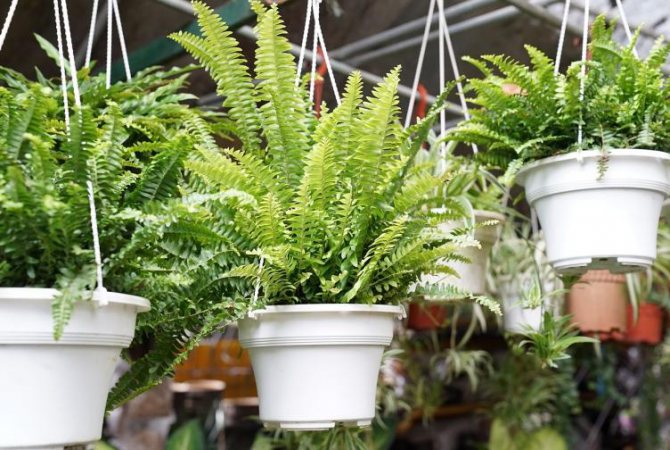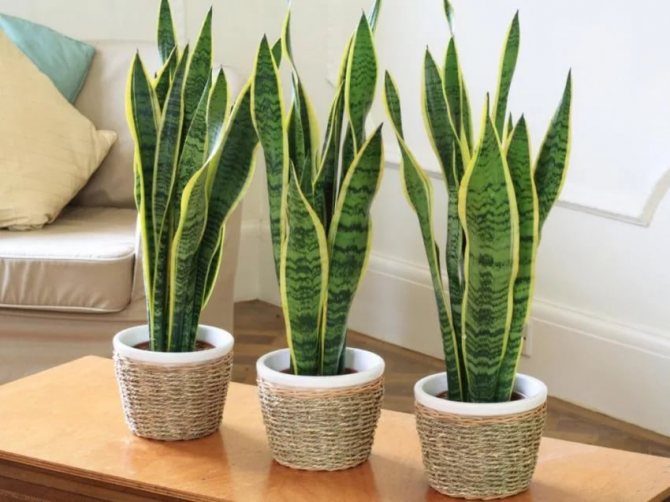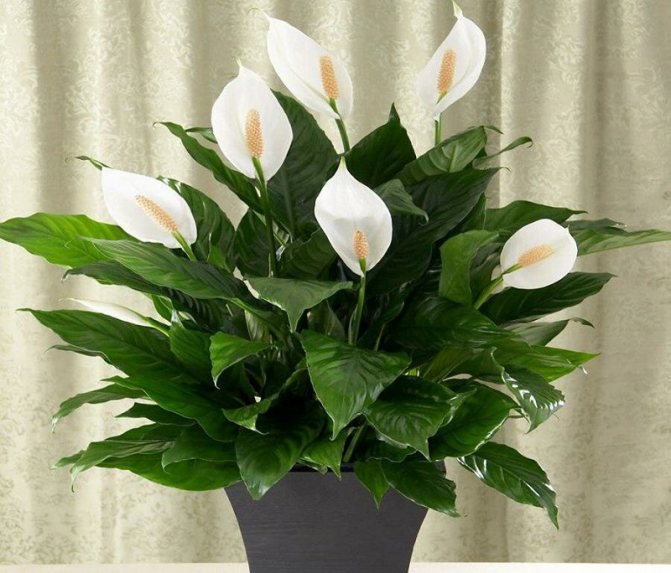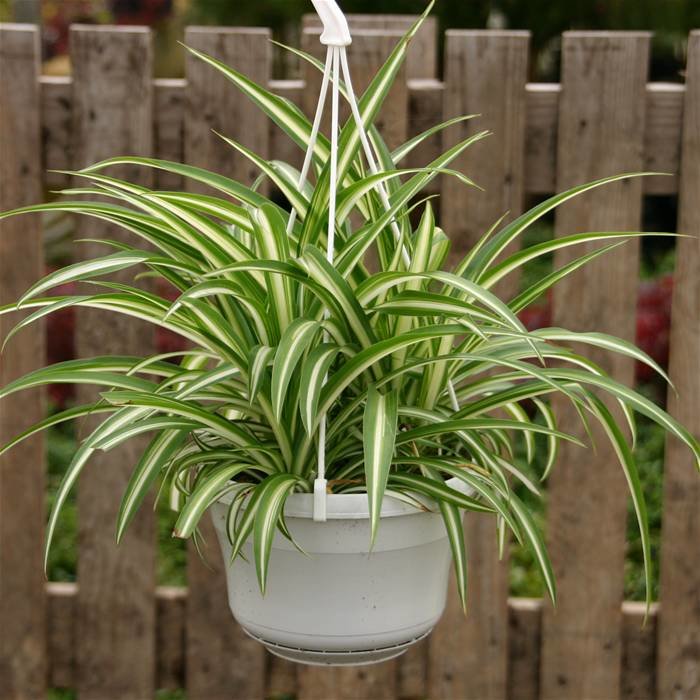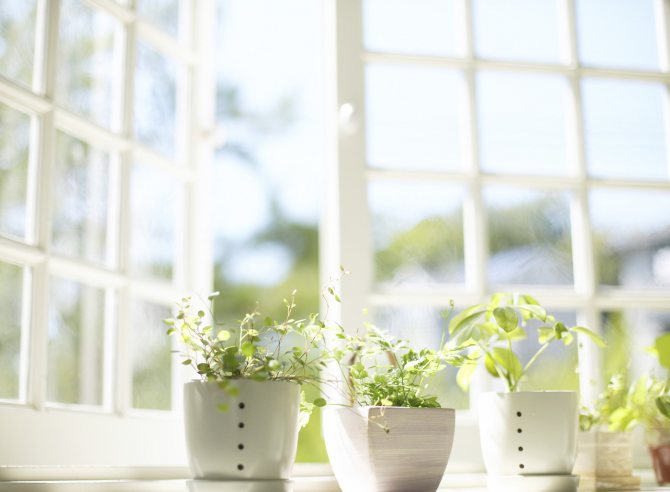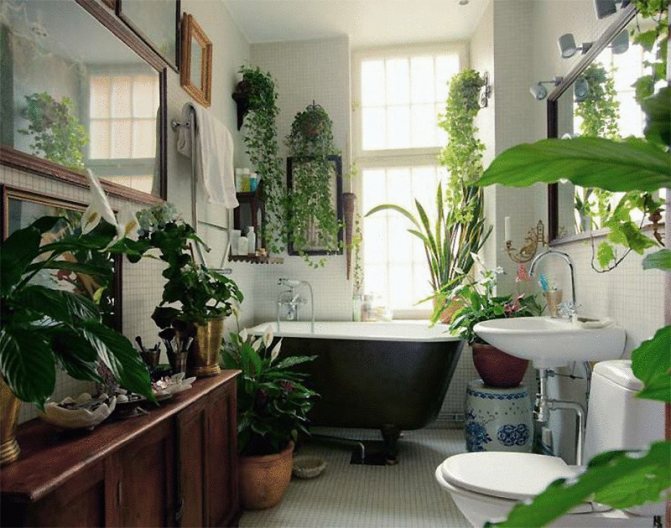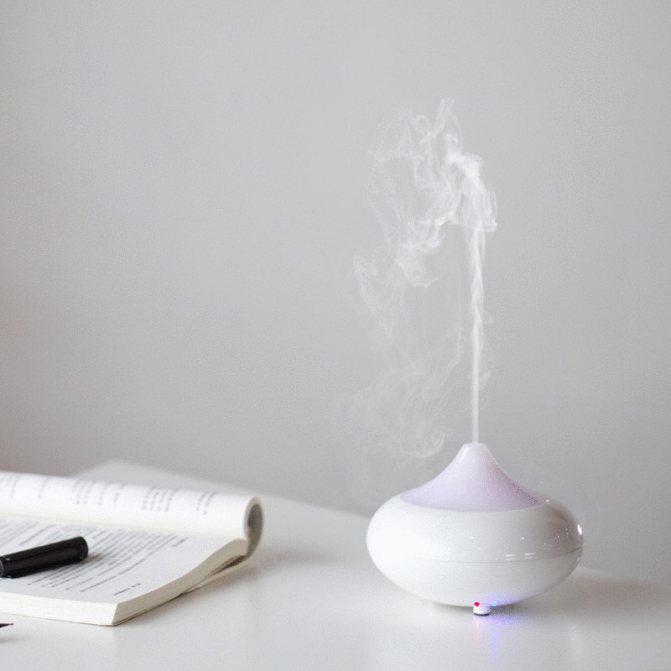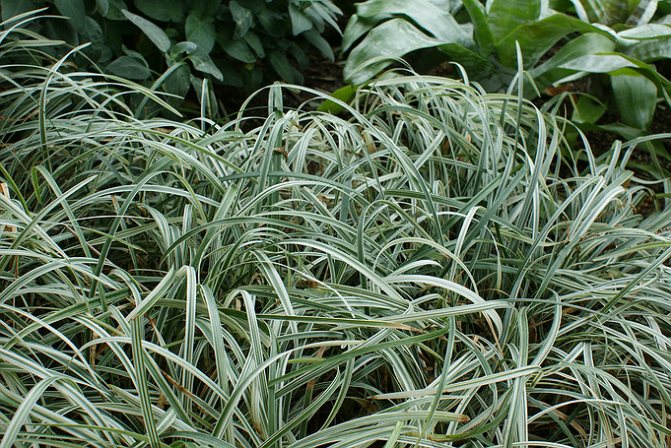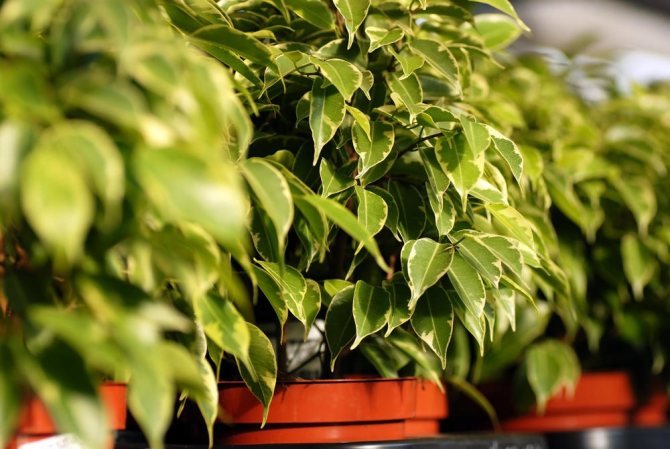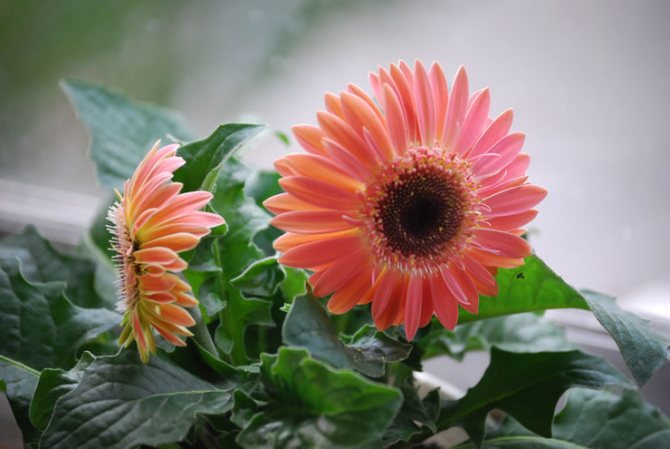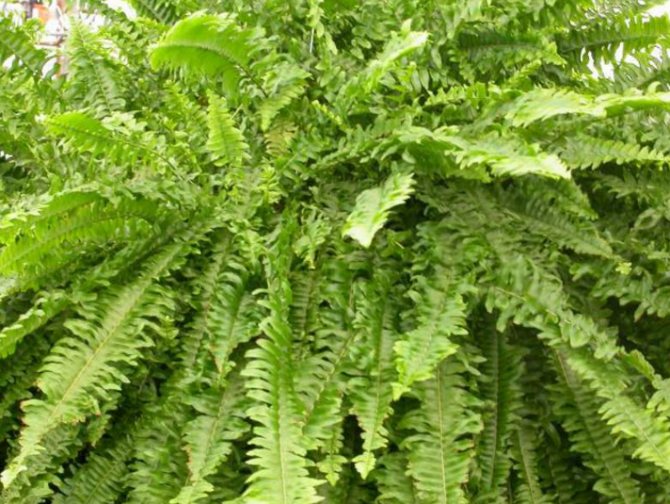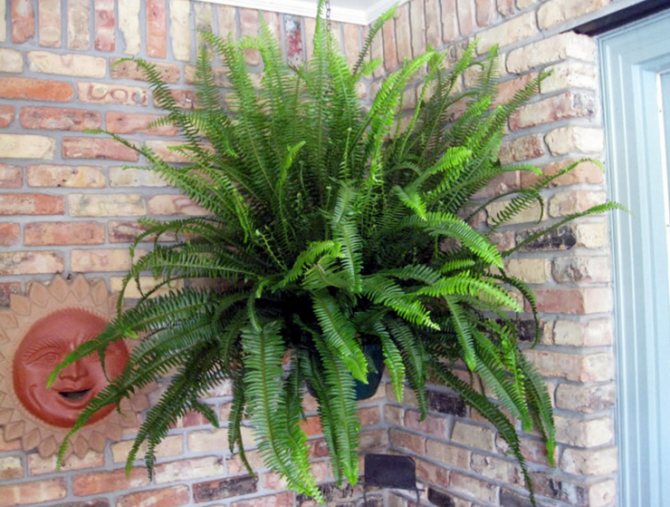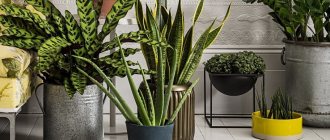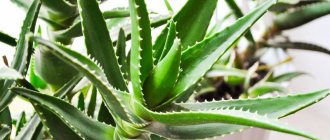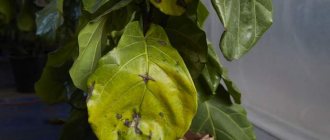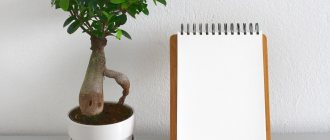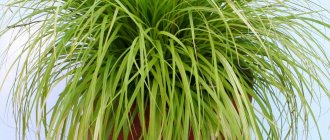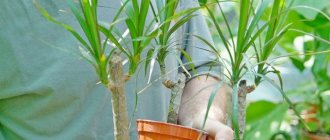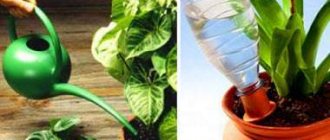Spathiphyllum (Spathiphyllum)
Spathiphyllum flower
First, spathiphyllum is beautiful. The flowering period of this plant (also known as "female happiness") lasts several months. It loves diffused light, it is optimal if you put it in the shade. Proper watering is important: in summer - abundant, in winter - moderate. This plant cleans the air of such harmful substances as ammonia, benzene, formaldehyde and trichlorethylene, which evaporate abundantly from the surfaces of lacquered furniture and chipboard panels.
Indoor plants that purify the air
Currently, it is indoor plants as natural natural filters that are the most faithful and safe helpers in purifying the air from various harmful impurities. The most effective of them are the indoor plants presented below.
DRACENA MARGINATA
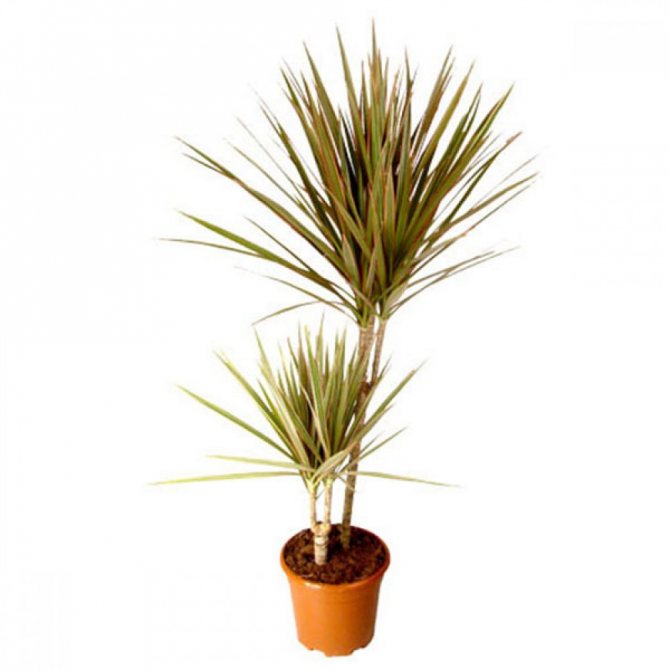
This type of dracaena is very common and can reach a height of up to 3 meters. Dracaena itself resembles a miniature palm tree. This plant feels comfortable both in bright sunlight and in diffused lighting. The soil should not be soggy, but it should be moist enough. For dracaena, water in the pan is destructive.
PELARGONIA PLATUARY
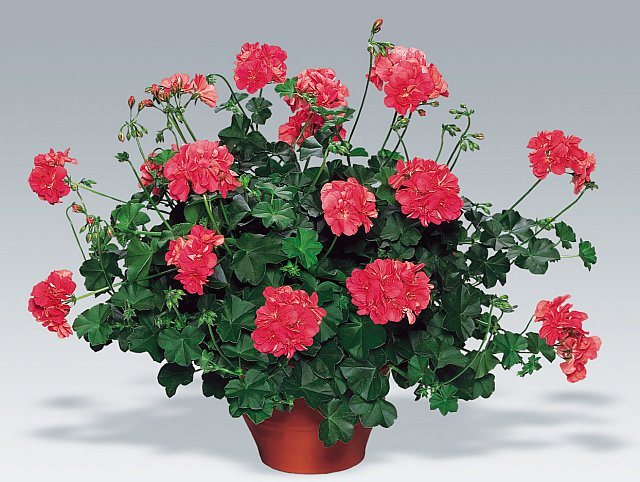

Pelargonium (geranium) perfectly cleans, ionizes and disinfects the air. In addition, for many, it serves as a cure for headaches. Geranium requires high light and abundant watering. However, the plant rejects surface spraying, and in winter it needs a lower temperature.
HAMEDOREA HIGH
This plant is a palm tree capable of reaching a height of 1-2 meters. The plant releases moisture into the air, which makes it especially useful in dry air during the heating season. Despite the fact that this palm tree has a positive attitude to bright light, it is better not to place it in direct sunlight. The soil must be moist.
WALLIS SPATIFILLUM
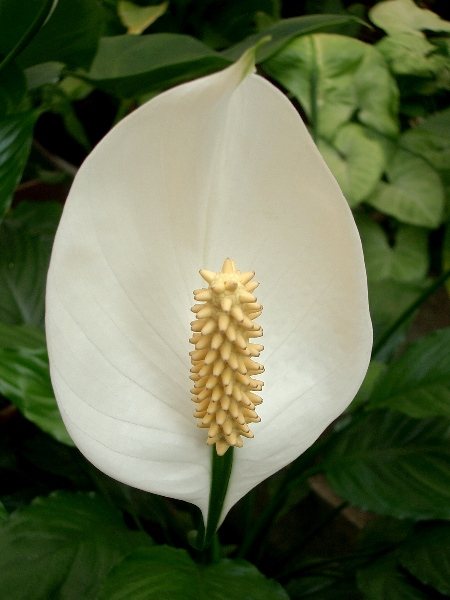

This houseplant does an excellent job of purifying the air, and its extraordinary flowers also take part in this. Spathiphyllum does not tolerate bright light, loves shade and requires high humidity. The soil should be slightly moistened all the time.
EPIPRENUM GOLDEN
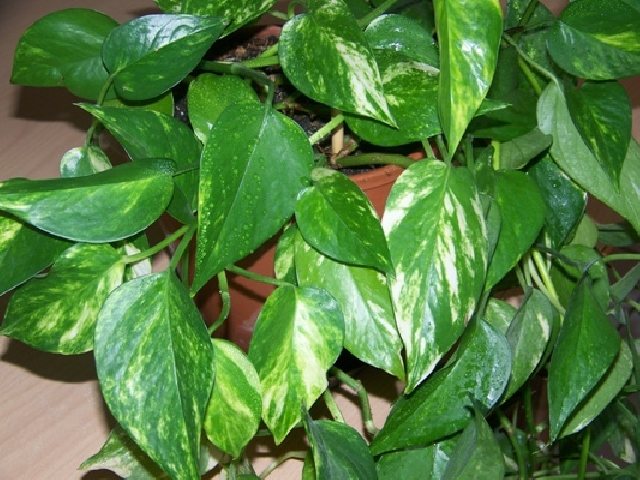

This is a vine, capable of being 2 meters or more in length. Golden Epipremnum is considered one of the most effective plants for purifying the air in the house. It grows in any light, but it is afraid of direct sunlight. Water it as soon as the soil begins to dry out. When the plant reaches a great length, it is recommended to remove the whiskers.
HEDERA HELIX
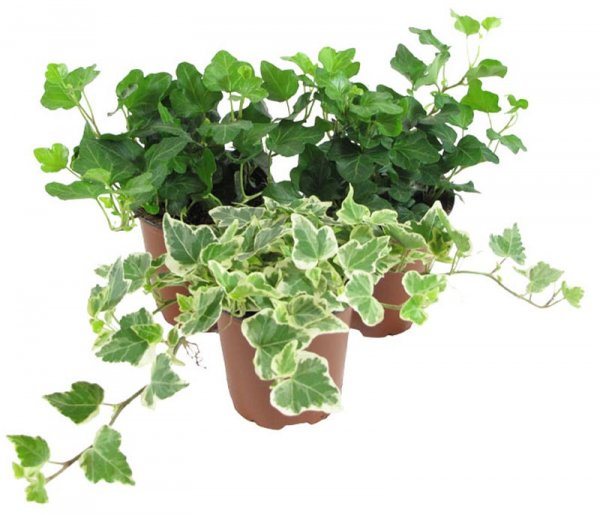

This plant is a climbing shrub that is easy to grow in hanging pots. Hedera is great for combating indoor allergens such as mold. This shrub is the plant of choice for low-light areas, but it needs to be watered abundantly, the ground is constantly kept moist. In winter, the frequency of watering is reduced.
AGLAONEMA MODERATE


Aglaonema is interesting in that it produces red fruits, which significantly increase its decorative qualities. The plant likes high humidity, well-drained soil and diffused light. You can put the aglaonema in a pan of water by placing the pot so that it does not come into contact with the water.Make sure the topsoil is dry before watering, as the plant only feels comfortable with moderate watering.
CHLOROPHYTUM COOL


Chlorophytum is considered the most unpretentious indoor plant. The plant has long and narrow leaves of white-green color, as well as hanging airy whiskers with short processes. It grows well both in the light and in the shade. In the light, the leaves become bright. Watering is rare. Then chlorophytum will absorb moisture from the roots. With more frequent watering, it grows faster.
SANSEVIERIA THREE-STRIP


Sansevieria is considered a very hardy and durable indoor plant. It has long, tough leaves of a dark green color with horizontal stripes, lighter in tone. This plant loves bright light and prefers moderate watering during growth when the topsoil is already dry. In winter, the frequency of watering decreases, but it is not recommended to allow the soil to completely dry out.
FICUS ELASTIC
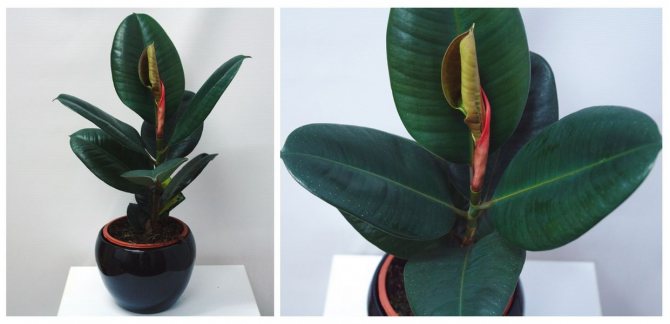

The leaves of this plant are usually broad, shiny, dark green or variegated. Its aerial roots have the ability to wrap around the trunk, forming the most interesting shapes. Ficus elastica grows in bright diffused light and requires moderate watering when the soil dries slightly.
It should be noted that all these indoor plants are far from alone in their ability to release oxygen and purify the air from harmful substances. These are just a few examples of such plants. In addition, each of these natural filters represents one specific species of the same plant. So, for example, dracaena is also Tree-like, Fragrant, etc. But regardless of the type of dracaena, its ability to remove benzene and formaldehyde impurities from the air remains. The same goes for the rest of the plants. Therefore, a room can be decorated with the same plant in its various forms.
Sansevieria
Sansevieria leaves
This houseplant, popularly known as "mother-in-law's tongue", is an oxygen generator and is considered one of the most effective for air purification. It has a beneficial effect on the human immune system and protects against toxins released by synthetics and linoleum. Also, you cannot do without this plant where there is a lot of smoking and a lot of tobacco smoke.
The plant, which is also called "mother-in-law's tongue", will give odds to any humidifier. Sansevieria grows in very arid areas and has learned to generate a lot of oxygen from dry soil.
Sansevieria can be safely put even to lazy housewives who forget to water the flowers. And a life hack: if you add a little activated carbon to the earth, it will also purify the air.
Spathiphyllum
Spathiphyllums are often found in homes. Plants are useful, decorative - lanceolate, intensely green leaves, delicate flowers - a wonderful decoration of the room. Leaves have the ability to absorb toxic volatiles from the air, which has a beneficial effect on its quality.
Attention! Spathiphyllum are poisonous, you need to place them in places inaccessible to children and animals.
a brief description of
- height: up to 100 cm;
- decorativeness: flowers, foliage;
- flower color: white, cream;
- flowering period: February-October;
- position: shadow, partial shadow.
Perennial plant with decorative leaves and flowers. Easy care makes Spathiphyllum popular.
Spathiphyllum wallisii belongs to the giant Araceace family. The name comes from the white, greenish-white leaves curled around a creamy white straw bulb. The leaves are long, lanceolate, green, shiny.
Grows best in partial shade at room temperature. In summer, spathiphyllum likes humid air; in winter, the temperature must be maintained at least 16 degrees Celsius. The plant should be watered with soft water at room temperature. The soil should be slightly damp, but not wet. From March to August, every 2 weeks, you need to fertilize the plant with potted fertilizer.
Spathiphyllum loves clean leaves, you need to wipe them from dust with a damp cloth, spray with soft water.
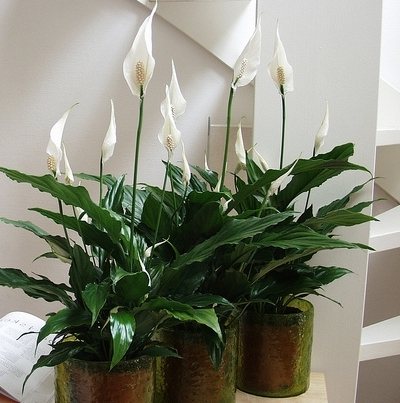

Dracaena
Dracaena bordered (Dracaena Marginata)
Among the many varieties of dracaena, the best air cleaners are Dracaena Marginata and Dracaena Deremensis. The first resembles a palm tree and, with proper care, can reach quite large sizes. It has the ability to humidify the air, reduces formaldehyde, and also absorbs trichlorethylene, which can be useful if you have a copier or printer at home.
Chlorophytum
The popular, easy-to-grow plant offers air purification in addition to its attractive appearance. Chlorophytum intensively absorbs carbon dioxide, benzene, xylene, used in the production of plastics, and also found, for example, in leather, printed materials.


Ficus
Our beloved unpretentious ficus also knows how to saturate the house with oxygen. The houseplant "works" especially effectively during the period of viruses and epidemics. Ficus, along with moisture, kills bacteria and purifies the air of toxins.
We suggest that you familiarize yourself with the Methods of correct insulation with mineral wool for siding in a wooden house
If your windows face the road or a plant is smoking nearby, ficus is ideal.
Ficus trees
Ficus - a symbol of philistinism, ridiculed at the time by Mayakovsky - is an extremely useful plant. It can filter out formaldehyde from carpets and furniture, and trichlorethylene and benzene from plastics, linoleum and rubber. Moreover, ficuses secrete phytoncides that kill microorganisms and saturate the air with oxygen.
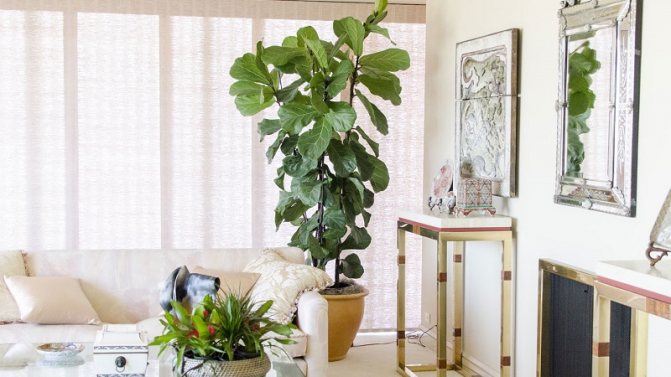

But since they produce oxygen in daylight, and absorb in the dark, you should not put a pot with this plant in the bedroom, and even more so in the nursery. The right place for it is the kitchen and rooms facing the busy street. By the way, there is a popular belief that if there are no children in the family, then you need to grow a ficus - and they will appear.
Useful indoor flowers
Screening of indoor plants for air purification from volatile organic pollutants was carried out by Dong Sik Young, Stanley J. Keyes and other group of scientists. They tested twenty-eight of the most common indoor plants for the effectiveness of air purification of aromatic hydrocarbons (benzene and toluene), aliphatic hydrocarbons (octane), halogenated hydrocarbons (trichlorethylene - TCE), and terpenes (a-pinene).
Here are the test results:


As you can see, Hemigraphis alternata, Ivy Hedera helix, Hoya beautiful Hoya carnosa, and Asparagus densiflorus have shown the highest removal efficiency of all pollutants. Tradescantia pallida has been shown to be highly effective in removing four out of five volatile compounds (benzene, toluene, trichlorethylene, and a-pinene).
As you can see, some plants are more effective at removing some carcinogens, and less effective against others. Therefore, the more diverse the plants on your windowsills, the more of them, and the healthier they are, the cleaner the air in your home. The number and health of plants are important because the air-cleaning capacity of plants is related to the large number of stomata on the leaves.
Returning to the NASA study, I consider it necessary to draw your attention to the following point. The first studies proved the usefulness of indoor plants, but during the tests, scientists were interested in the question of defoliation of leaves, is it really only plant leaves that purify the air? Therefore, NASA scientists conducted a second study and received very interesting results.
Dracaena marginata participated in the experiment:
- ordinary plants in pots, with a developed crown
- potted plants (with leaves) covered the soil with a thick layer of gravel
- dracaena cut off all the leaves, left hemp up to 5 cm tall, the soil in the pot is not covered
- control pots with soil (no roots)


The results of the experiments showed that the roots of plants, and related microorganisms, as a mini-ecosystem, are the main reason for chemical cleansing, at least in this study! This is not surprising, because the cut plant continued to function - after a week it already grows new shoots, and after three it has a small crown.
Another test showed that even within the same genus of plants, different species purify the air in different ways:


- Dracaena fragrant Dracaena fragrans "Mass Cane"
- Chrysanthemum pot
- Gerbera jamesonii
- Dracaena deremskaya variety Varnekey Dracaena deremensis "Warneckei"
- Ficus benjamin Ficus beniamina
Please note: Fragrant Dracaena - significantly exceeds its sister Dracaena deremskaya in terms of air purification efficiency.
Chlorophytum
If you put several chlorophytums in one room, the air will be almost like in alpine meadows. A simple house plant fits perfectly into the interior and saturates the apartment with fresh and clean air.
Moisture accumulates in the leaves and is released in large volumes, eliminating benzene and carbon monoxide. But do not overdo it with seedlings, otherwise you risk turning the apartment into a greenhouse.
Chlorophytum bush
Probably, for your query "which plant cleans the air better", the first thing the search engine will give you the striped leaves of this plant. Chlorophytum is very unpretentious, multiplies easily, prefers diffused light and is not susceptible to disease. Its leaves accumulate compounds of sulfur, benzene, carbon monoxide, nitrogen and formaldehyde, which are so generous in modern finishing materials.
Air purification in the apartment
One way to clean your home air is to grow indoor plants. Which house flowers are more effective, which ones are less - information is constantly changing. Here is an example: a study by Korean scientists was carried out in 2006 and was presented at the 8th International Congress of Physiological Anthropology in Kamakura (Japan):
Two laboratories - sealed rooms 3.5 by 3.5 m, 2.4 m high, without ventilation, in which the sensors are placed. The first laboratory was filled with potted plants, the second, the control, remained empty. Harmful volatile gases were fed equally into both rooms. An hour later, the readings of the instruments were taken - the changes in the levels of benzene, toluene, ethylbenzene, xylene and formaldehyde were measured.


To show the role of the quantitative influence of plants, the experiments were carried out twice: in the first case, such a number of plants were placed in the room that they occupied 10% of the total space, in the second - only 5%.
The experiment involved three plants:
- Aglaonema short-coated Aaglaonema brevispathum
- Pakhira aquatic Pachira aquatica
- Ficus benjamina Ficus benjamiana.
Surprisingly, all three plants undoubtedly purified the air, more efficiently, almost twice as good in those groups where the number of plants was 10% of the area of the premises. But Pakhira turned out to be more effective in neutralizing ethylbenzene and especially benzene - the decrease was 76.3% compared to the initial level - 15.7 mg / m3 was neutralized per hour. Aglaonema reduced the level of benzene by 44.7% - it neutralized 8 mg / m3, and ficus - by 40%, neutralized about 6 mg / m3 per hour.
For other gases, the efficiency of plants has changed: Aglaonema coped better with toluene. The picture looked like this: Aglaonema neutralized 45.6 mg / m3 per hour, ficus - 36.1 mg / m3, Pakhira - 31 mg / m3 toluene - this is 10% of the vegetation area.


In relation to xylene, Aglaonema and Pakhira showed the same efficiency, a little less - ficus. The reductions were 10.4-11.9 mg / m3. Formaldehyde was most effectively removed by Aglaonema - 330.8 mg / m3.
The experimenters Jeong-Eun Song, Yong-Shik Kim and Jang Yeul Sohn did not stop there, they tested the "work" of plants to remove harmful gases under different lighting conditions ... During testing, it turned out that the intensity of sunlight has a serious effect on air purification, but also depends on the type of plant. Compared were two groups placed under intense lighting and with light diffused light.
The results are as follows: Aglaonema and Pakhira purified the air much better under more intense lighting, Ficus benjamin is almost the same under any lighting conditions.
Hamedorea
Chamedorea graceful bush (Chamaedorea elegans)
Hamedorea is an exotic palm tree native to the tropics of Mexico, Guatemala and the Yucatan Peninsula. It grows very slowly and can reach a height of two meters. It is better to place it away from direct sunlight. Also, a tropical palm tree needs frequent spraying throughout the year, except for winter. In gratitude for proper care, she will clean the air of your home from the fumes of formaldehyde, trichlorethylene and benzene.
Sansevieria
An extremely impressive plant that cares about oxygen in addition to its aesthetic value. Sansevieria absorbs carbon dioxide exhaled by a person and produces pure oxygen. This makes the plant ideal for bedrooms, children's rooms. Sansevieria guarantees clean air, healthy, effective sleep.
This is an ideal offer for those who dream of a "green friend" but have little time to care for him. Sansevieria will tolerate almost all mistakes, negligence, with the exception of over-watering.
According to legend, sansevieria owes its Latin name (Latin Sansevieria) to the Italian prince Raimondo di Sangro from San Severo, who brought it from Africa to Naples in the 18th century. Since then, sansevieria has gained immense popularity in Europe, settled on the windowsills forever, receiving the name of the iron plant.
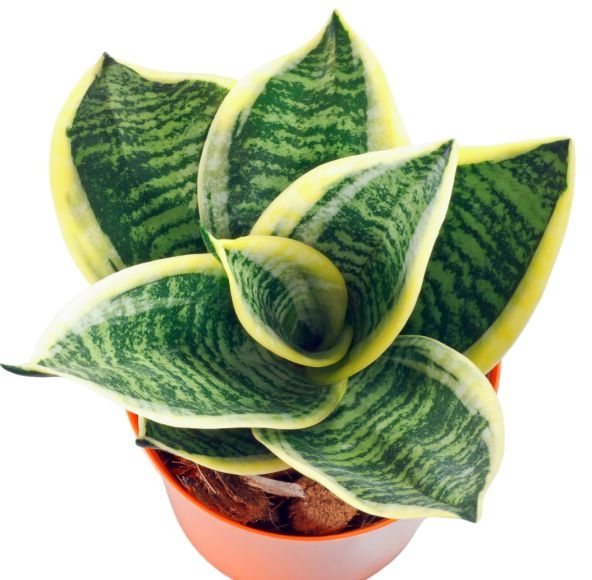

Currently, about 50 species of sansevieria have been described, but only 5 varieties are grown in pots. Sansevieria usually grows to a height of a meter or more, for example, the Laurentii variety. There are dwarf species no higher than 15 cm - for example, the popular mini Sansevieria with decorative gold stripes along the edges of the leaves.


Growing up, leaving
Many years ago, Guinean sanseviers decorated the homes of our grandmothers, later their popularity gradually diminished, they were completely forgotten. Today the plant is rediscovered, experiencing a "second youth". Their popularity is growing, plants can be bought from any florist, in the supermarket.
It is enough to choose simple, modern, elegant pots to make them the main decoration of the room. You can go on vacation without fear, the flower will withstand a month without a drop of water. Fleshy leaves grow from thick rhizomes hidden just below the surface of the earth. This is a reservoir of water that the plant uses as needed. It is rarely watered, not abundantly, so that the water does not stand. Place a thick layer of drainage at the bottom of the pot. Over-watering is the most common cause of short flower life.


Begonia
Coral begonia flowers (Begonia corallina)
We offer you to familiarize yourself with Household dehumidifiers for home
Begonia is a rather unpretentious flower that loves both light and water. This is one of the few plants that can capture volatile chemical compounds, which is important if you use a lot of household chemicals. Also, the leaves of this plant release phytoncides into the air - substances that kill colonies of microorganisms. It is especially effective against streptococci and staphylococci.
Which plants effectively humidify the air?
Indoor plants contribute to the creation of a comfortable microclimate for humans. They absorb water from the soil and release up to 90% of moisture into the environment, spending only 10% of the absorbed moisture on their own internal processes. Evaporation of water leads to an increase in humidity in the room by 10-20%.
The following plants especially abundantly release water into the environment and increase the humidity in the apartment:
- dwarf ficus;
- sparmannia;
- nephrolepis;
- fatsia;
- hibiscus;
- dracaena.
Dwarf ficus
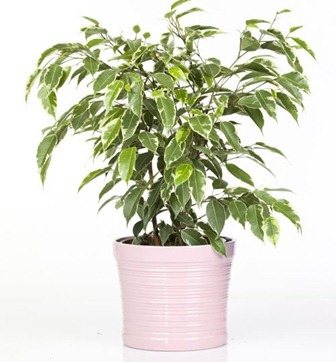

This fast-growing small-leaved climbing ficus has little resemblance in appearance to other types of ficus. The plant comes from Japan and China, very decorative, looks beautiful when grown in ampelous form. Dwarf ficus requires diffused lighting, abundant watering in summer, the temperature of the content is + 20 ° С ... + 25 ° С. In winter, watering is reduced, the temperature of the content is reduced to + 12 ° C, and when it drops to + 8 ° C, watering is stopped. If the temperature of the content does not decrease in winter, then watering and spraying does not stop. In the spring, ficus is transplanted into a universal soil for indoor plants. Easily propagated by cuttings, growing to the soil with adventitious roots.
Fern nephrolepis (Nephrolépis)
Fern nephrolepis
Nephrolepis is considered one of the most beautiful ferns. This species grows quickly and forms a lush bush. Like all ferns, it is picky about the humidity of the air and soil, as well as the temperature regime - it will stop growing in the cold. It should not be put in the bedroom, because, like the ficus, in the dark it begins to actively consume oxygen.
Do you think why the fern surrounds us, wherever we are: in school classes, hospitals and offices? Yes, because nephrolepis intensively moisturizes the air and filters it, destroying harmful substances and viruses.
The bush itself will "tell" you that the room is too dry - its leaves will turn yellow. Water the fern and the balance will be restored.
We create a favorable atmosphere in the room
Plants not only clean the room of harmful air compounds, but also prevent the appearance of fungal infections and mold. The vegetation contains phytoncides, which have the ability to kill dangerous viruses and pathogenic bacteria. Flowers are especially effective as purifiers during the flowering period. It was during this period that they actively begin to release phytoncides.
Poisonous indoor plants, dangerous to humans
However, not all plants are suitable for growing as air purification. Therefore, it is necessary to have certain information before purchasing indoor green residents.
How the cleansing properties of plants were discovered
The cleansing properties of plants have always been discussed, but this hypothesis was officially and scientifically confirmed only in 1989 by NASA researchers.
Important! Scientists specially filled the chambers with various harmful volatile compounds: benzene, formaldehyde, trichlorethylene, xylene, etc. Various types of indoor plants were placed in these chambers. Over time, the content of harmful compounds decreased, and the oxygen level increased.
Table of hazardous substances and plants that neutralize them
The air of an apartment usually contains five main compounds of harmful and harmful substances. Which compound a particular plant removes can be seen in the following table:
| Harmful substance and where is it contained in the room | The plant that absorbs this substance |
| Formaldehyde. It is released from fiberboard, chipboard, carpets, furniture upholstery, tobacco smoke, household gas and plastic products. | Gerbera, chlorophytum, sansevieria, geranium, Benjamin ficus, bamboo palm. |
| Trichlorethylene. It is released from chlorinated water, furniture and carpet cleaners, paint, varnish, printer cartridge. | Begonia, azalea, sansevieria, spathiphyllum. |
| Benzene. It is released from tobacco smoke, household chemicals, rubber, plastics, paints and varnishes. | Gerbera, aglaonema, Benjamin ficus, bamboo palm. |
| Ammonia. It is released from household appliances, tobacco smoke and household chemicals. | Begonia, geranium, Benjamin's ficus. |
| Xylene. It is released from plastic products, varnishes, paints, adhesives, exhaust fumes, tobacco smoke and leather products. | Lily Flamingo, azalea, spathiphyllum. |
In addition to the harmful compounds listed above, the air contains: toluene, xylene, carbon, etc.

